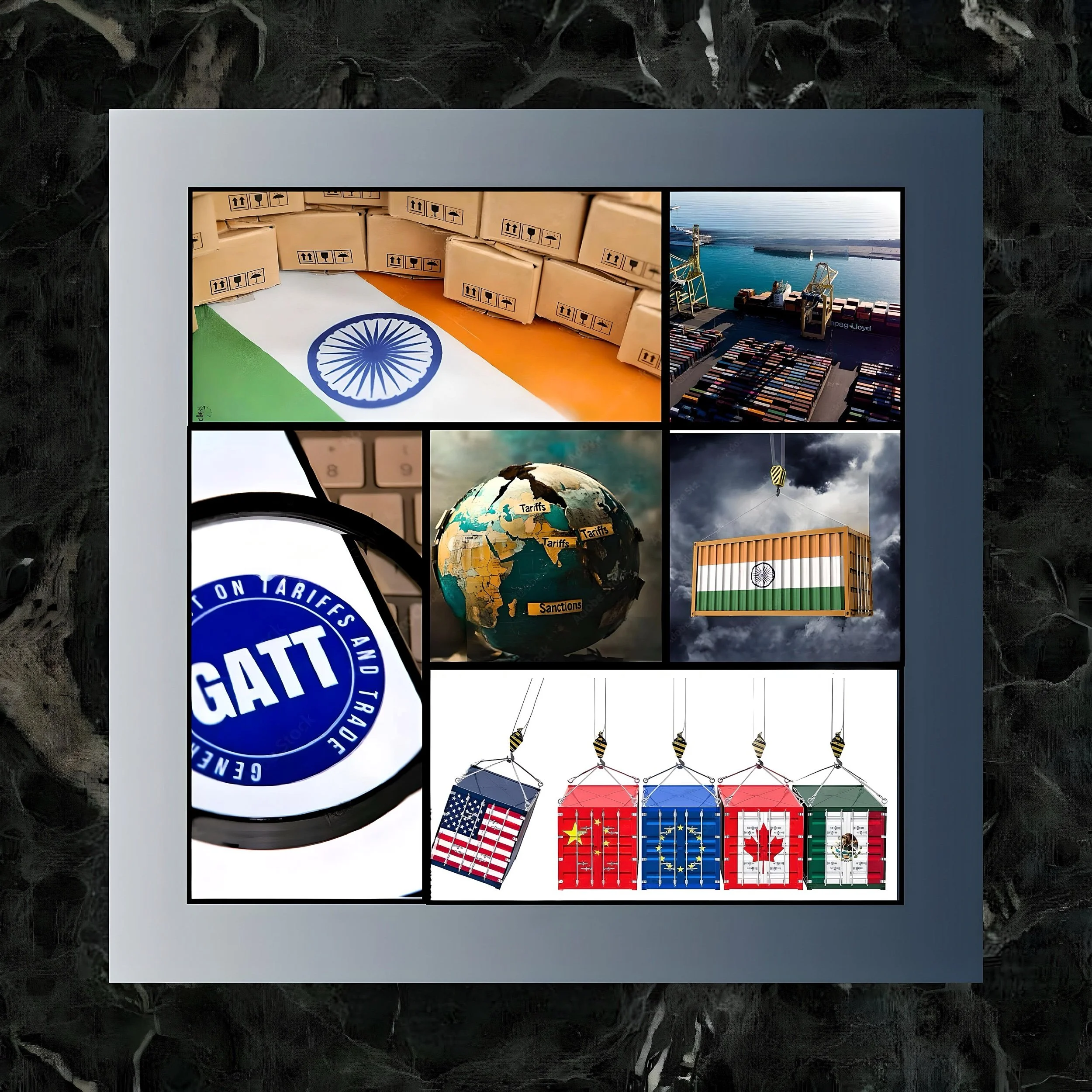Analyzing the Impact of Trump’s Tariff Strategy on India: Economic Gains and Strategic Costs for the United States
Introduction
The escalating tariff tensions between the United States and India under President Donald Trump’s administration represent a pivotal moment in global trade dynamics.
Announced in early 2025, Trump’s reciprocal tariffs—targeting countries with higher import duties on U.S. goods—have placed India in the crosshairs of a broader “America First” trade agenda.
With India’s average tariffs significantly exceeding those of the U.S., particularly in sectors like automobiles (over 100%) and agriculture, the policy has ignited debates over its efficacy in bolstering U.S. economic interests.
FAF evaluates whether Trump’s tariff war with Prime Minister Narendra Modi benefits the U.S., weighing short-term gains against long-term geopolitical and economic consequences.
Strategic Objectives of Trump’s Reciprocal Tariffs
Reducing the U.S. Trade Deficit
The U.S. trade deficit with India stood at $23.26 billion in 2024, driven by exports of pharmaceuticals, textiles, and gems.
Trump’s reciprocal tariffs aim to narrow this gap by pressuring India to lower its import barriers. For instance, India’s auto tariffs—exceeding 100% on luxury vehicles—have long been a point of contention.
By mirroring these rates, the U.S. seeks to incentivize India to negotiate concessions, such as reducing tariffs on American agricultural products, energy exports, and defense equipment. Early signs of compliance include India’s decision to slash duties on bourbon whiskey (from 150% to 100%) and high-end motorcycles (from 50% to 30%).
Revenue Generation and Domestic Job Creation
Trump has framed reciprocal tariffs as a revenue-boosting mechanism, claiming they will “take in trillions and trillions of dollars”. By taxing imports at rates comparable to those imposed by trading partners, the policy theoretically protects U.S. industries from foreign competition, encouraging domestic production.
For example, higher tariffs on Indian steel and aluminum could revitalize American manufacturing sectors, albeit at the risk of provoking retaliatory measures.
Leveraging Geopolitical Influence
The tariffs coincide with efforts to deepen the U.S.-India strategic partnership, particularly in countering China’s dominance in Asia. By linking trade concessions to defense collaboration—such as India’s pledge to purchase U.S. fighter jets—Trump aims to position the U.S. as India’s primary arms supplier, displacing Russia. This dual approach seeks to balance economic demands with broader security objectives.
Short-Term Economic Benefits for the United States
Increased Market Access for U.S. Exports
India’s tentative tariff reductions on select goods, including medical devices and electronics, could expand opportunities for U.S. exporters.
The Modi administration’s openness to importing more American liquefied natural gas (LNG) and crude oil aligns with Trump’s goal of narrowing the energy trade gap.
If finalized, such deals would bolster sectors like energy and agriculture, where the U.S. holds a competitive advantage.
Revenue from Higher Tariffs
The Congressional Budget Office estimates that Trump’s global tariff measures could generate $1.4 trillion in federal revenue over a decade. While India-specific figures remain unclear, the 100% tariff on select Indian goods—such as textiles and pharmaceuticals—would contribute to this pool, albeit at the risk of inflating consumer prices.
Strengthened Negotiating Position
By adopting a hardline stance, the U.S. has compelled India to the bargaining table.
Commerce Minister Piyush Goyal’s visit to Washington in March 2025 underscores India’s urgency to secure exemptions. Concessions like increased FDI limits in insurance (from 74% to 100%) could benefit U.S. firms like AIG, illustrating how tariffs serve as leverage for broader economic reforms.
Long-Term Risks and Drawbacks
Retaliatory Tariffs and Sectoral Vulnerabilities
India’s potential countermeasures threaten U.S. exports in critical sectors. Pharmaceuticals, which account for $46.4 billion in Indian exports to the U.S., face retaliatory risks if tariffs escalate.
Similarly, agricultural products like almonds and apples—already subject to Indian tariffs of 30–50%—could see further restrictions, harming American farmers.
Supply Chain Disruptions and Inflation
The U.S. reliance on Indian generic drugs (constituting 40% of its pharmaceutical imports) makes it vulnerable to supply shocks. Tariffs on electronics components, such as ethernet switches, could raise production costs for U.S. tech firms reliant on Indian manufacturing. Economists warn that such disruptions could exacerbate inflation, mirroring the 1.2% price surge observed after Trump’s 2024 tariffs on Chinese goods.
Erosion of Strategic Trust
While defense collaboration remains a bright spot, the tariff dispute risks alienating India at a time when U.S.-China rivalry intensifies.
Modi’s silence on Trump’s tariffs—contrasted with vocal protests from Canada and Mexico—reflects diplomatic caution but also underscores simmering tensions.
A prolonged trade war could push India closer to alternative partners like Russia and the EU, undermining U.S. influence in the Indo-Pacific.
Global Economic Slowdown
Trump’s tariffs have injected uncertainty into global markets, with the IMF revising its 2025 growth forecast downward by 0.8%. As India’s economy slows in tandem—GDP growth fell to 5.8% in Q4 2024—reduced consumer demand could dampen U.S. export prospects, creating a feedback loop of stagnation.
Comparative Analysis: U.S. Gains vs. Indian Resilience
Direct Impact on India
Contrary to expectations, India’s direct exposure to U.S. tariffs is limited. Only 15% of its exports ($82.5 billion in 2024) target the U.S., compared to Vietnam’s 25%. Sectors like IT services and gems—key drivers of India’s surplus—remain insulated due to their intangible nature. However, industries like chemicals and automobiles, which face U.S. tariffs of 25–100%, could suffer losses exceeding $12 billion annually
Indirect Consequences for the U.S.
The U.S. economy faces collateral damage from its own policies. Higher input costs for manufacturers relying on Indian steel and aluminum could reduce competitiveness, while inflation erodes consumer purchasing power. The Peterson Institute estimates that Trump’s global tariffs could cost the U.S. 0.6% of GDP growth by 2026.
Conclusion
A Pyrrhic Victory for the United States
Trump’s tariff strategy yields mixed outcomes for the U.S. In the short term, it pressures India into concessions, generates revenue, and protects select industries.
However, the long-term costs—supply chain disruptions, inflationary pressures, and strategic alienation—outweigh these gains. India’s economic resilience and diversification strategies (e.g., expanding trade with the EU and ASEAN) further diminish the tariffs’ efficacy.
For the U.S., a more sustainable approach would involve bilateral negotiations addressing non-tariff barriers and intellectual property disputes, rather than unilateral tariffs.
As the April 2 deadline looms, the ball lies in Trump’s court: escalate a winnable but costly trade war or pivot to dialogue that preserves the U.S.-India partnership in an era of great-power competition.





